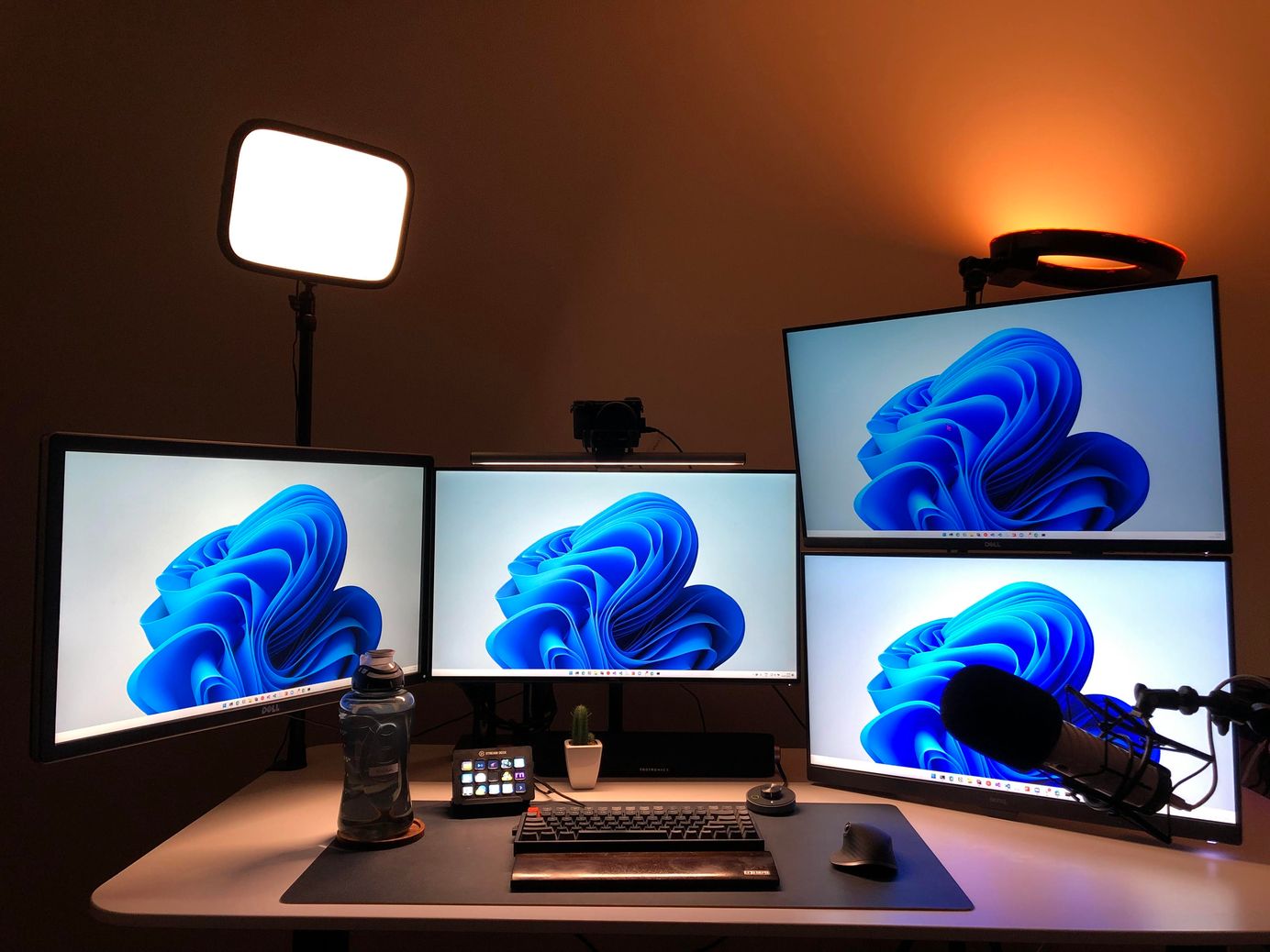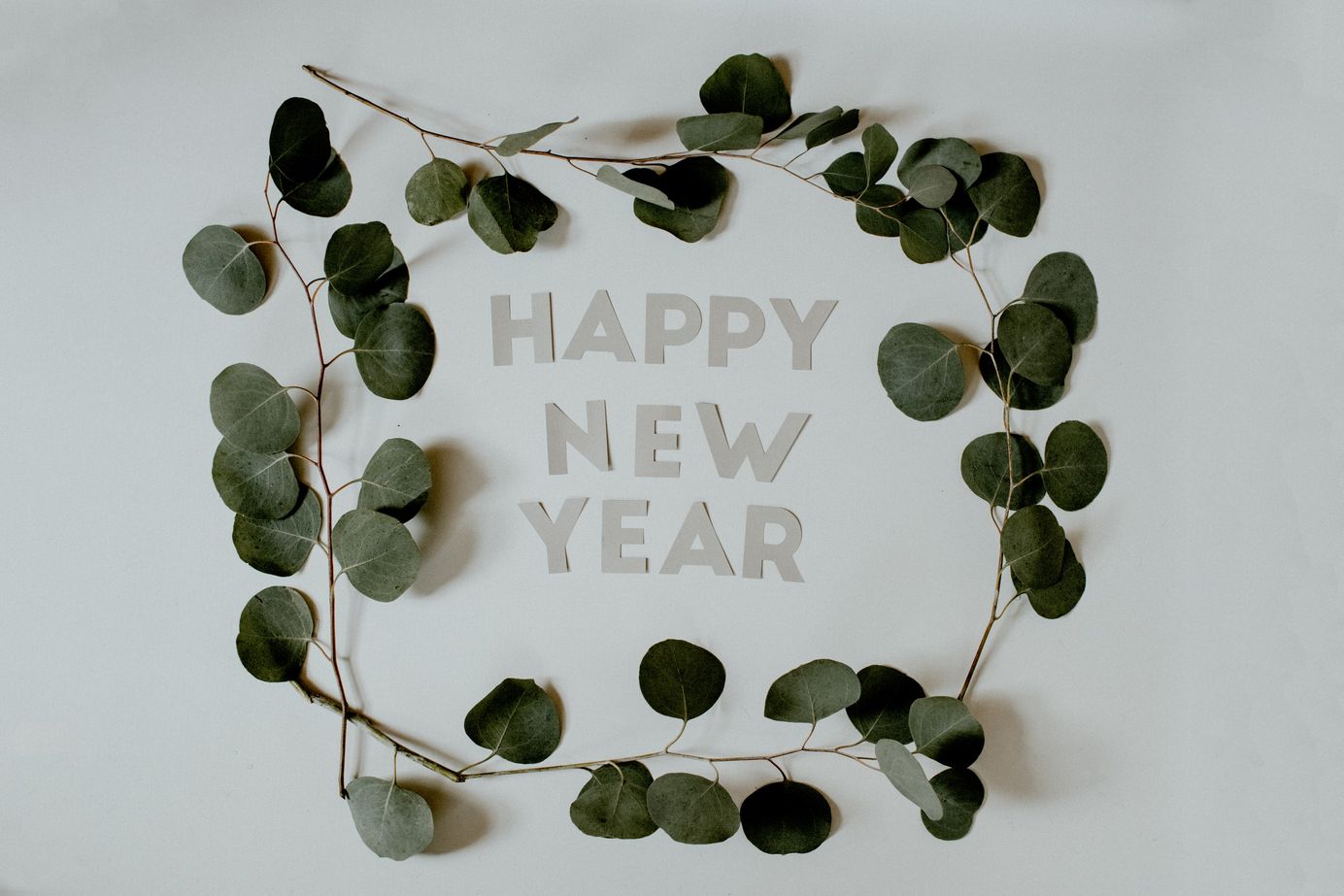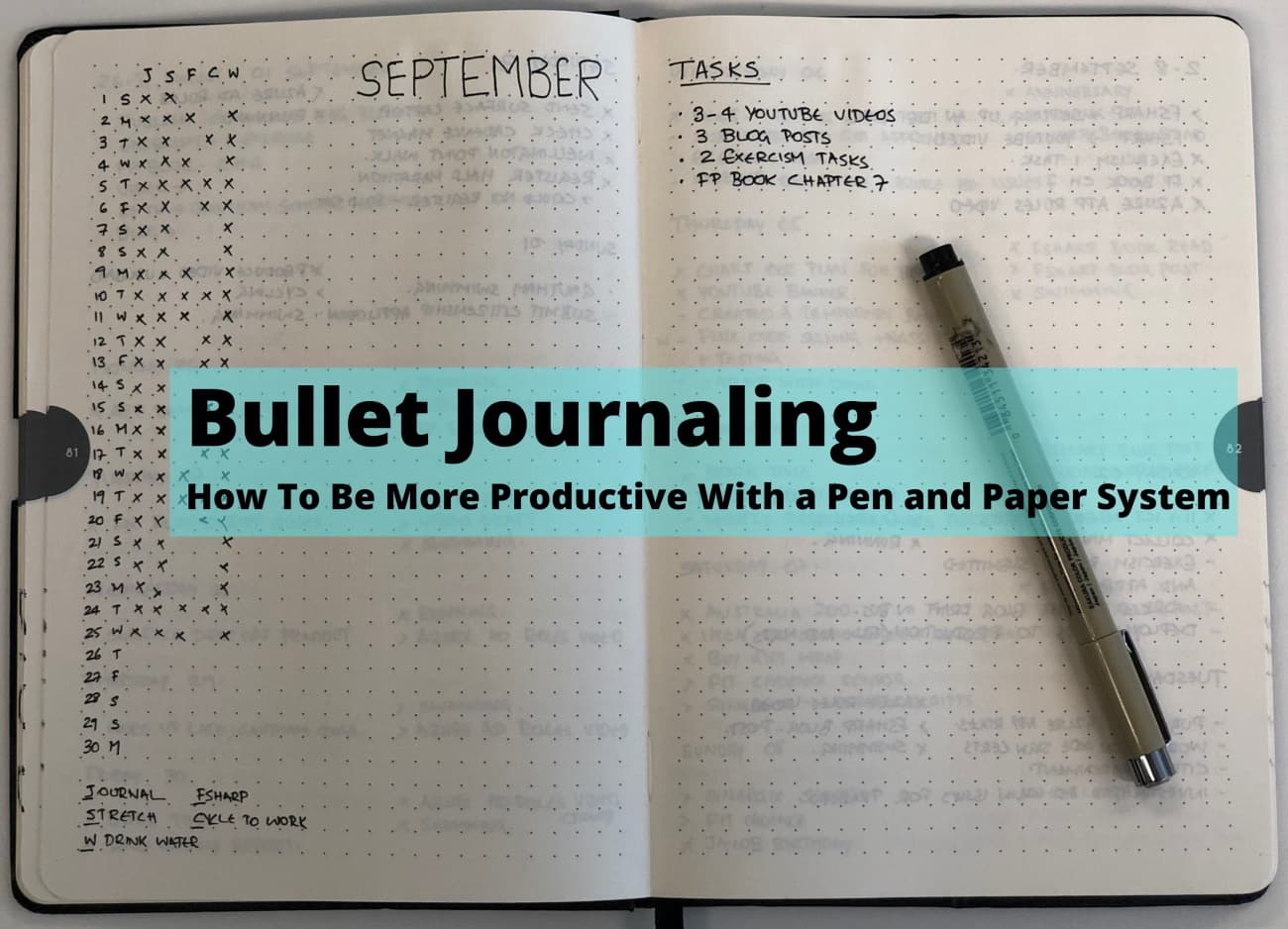
Bullet Journaling: How To Be More Productive With a Pen and Paper System
Table of Contents
I am always on the lookout for productivity hacks and new systems to improve the way I work. Given my nature of work is in front of a computer, my productivity tool choices have always been digital. However, at the start of this year, I came across an interesting book Digital Minimalism. After reading the book, I have changed my de-facto relationship with many apps and the phone in general. I discovered the book while I was skimming through a blog post related to Bullet Journaling. Given that Bullet Journaling also favors disconnecting from devices, I decided to give it a try.

Though it does require a journal, Bullet Journal is a methodology. It's best described as a mindfulness practice disguised as a productivity system. It's designed to help you organize your what while you remain mindful of your why. The goal of the Bullet Journal is to help its practitioners (Bullet Journalists) live intentional lives, ones that are both productive and meaningful.
If you are new to Bullet Journaling check out the quick introduction to Bullet Journaling and also the Recommended reading at the end of this post.
I have been bullet journaling since February 2019, but it is only recently that I have started finding it more useful and have built a workflow around it. When I started with this method, I was using it more as a reactive journaling tool and mostly capturing things after they happened. Even though I did plan ahead a few things and put it in the journal, I did not have any formalized practice around this. Off late, I came across the Youtube channel by Matt Ragland who shares a lot of tips around bullet journaling and the various strategies that he uses around it to get more productive. I took on some inspirations from it and also from a few other sources and tweaked my existing process.
Journaling Supplies
If you search for Bullet Journaling on the internet, you will likely see a lot of artistic pages, people talking about the various stationary items (pens, stickers, markers, washi tapes, etc.). But if you are like me (not very artistic) and don't care much about it, ignore all that. All you need is a pen and paper (preferably a book). Even though there is an official bullet journal notebook, this does work on any notebook/journal that you have. I use a dot-grid journal as it gives proper alignment and guides to draw lines and align lists. Below is what I use for bullet journaling.
- Otto A5 Bullet Journal
- Sakura Pigma Micron Pen
- Staedtler Triplus fineliner (Very rarely used)
Most of the non-artistic bullet journalists go by the name 'Minimalist Bullet Journal,' - if you are looking for inspiration on the internet.
Brain Dump
If you are starting fresh and trying to organize yourself, one of the first activities that I suggest to do is a Brain Dump. At any point in time, there are a lot of things in my mind and things that I kept committing to myself and others. It is not possible to keep up with everything that I wish to do. So the very first thing to do is to dump everything out onto paper and then decide what needs attention. The Incompletion Trigger List assists in getting everything out of your mind onto paper. It's a good idea to block some time of yours to perform this exercise and give it all the attention it needs. At times it helps to Slow Down to Go Fast.
Once you have the brain dumped onto paper, try and choose two to four top priority items that you want to focus on. I prefer to choose things with a different theme. E.g., my main three items (in no particular order) are:
- Fitness (Running, Cycling and Swimming)
- Blog and Youtube Channel
- Learning
Monthly Planning
Before the start of every month (usually the last day of the previous month), I plan for the upcoming month and capture some of the key things I want to achieve that month. Try and align things with the top priority items and helps move those items forward. E.g., I might list down the actual blog posts that I am going to publish that month and also the Youtube Videos. That said, I am not always that organized to come up with blog posts upfront - like the month below (in the image). As for fitness, I plan for any events happening or that I want to attend, etc. Usually, I follow some running plan that spans across a couple of months, so I don't have to work out any such details every month.
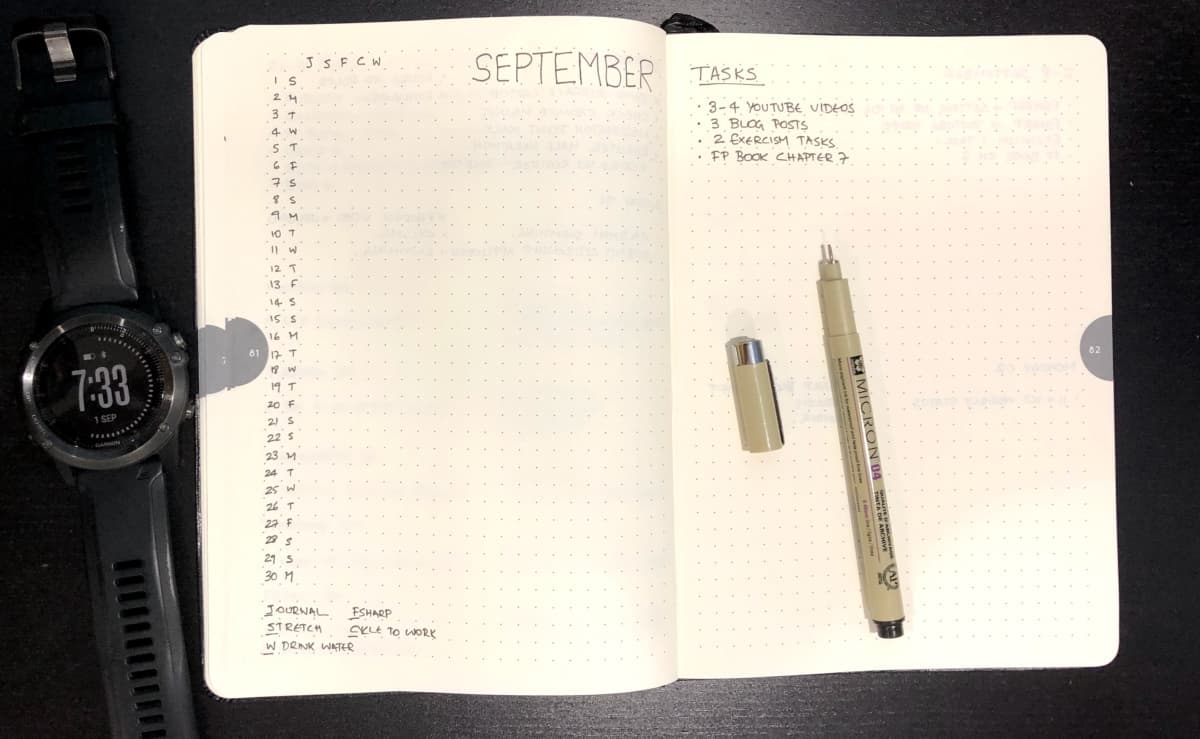
I add in a habit tracker for some of the key things that I want to track for that month. E.g., I try to stretch every day after waking up, drink lots of water, make sure I journal, etc. So I track this every day using my habit tracker (More on it on the Daily Planning section). For reminders and things that need to happen on specific days, I put them in Todoist as well. I copy this over into the month highlights, if any, for the current month.
Weekly Planning
Every Sunday evening, I spend 15-20 minutes to map out the upcoming week. It involves reflecting on the week that has passed, carrying over unfinished items, capturing things for the coming week, etc. I capture important meetings at work and any required follow-ups. I create my running workout plans in Garmin Calendar and sync that back with my watch.
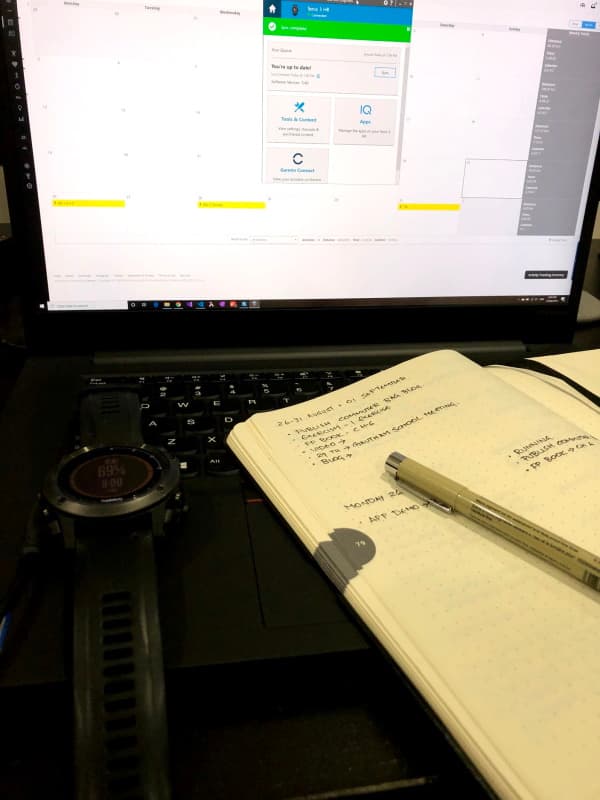
Daily Planning
Every day before bed, I spend 5-10 minutes updating my bullet journal and plan for the next day. Looking at the week's plan, I work out the tasks for the following day and try to break up into smaller items to move each item on the list forward. I update the habit tracker and cross off items that I have achieved for the day. The idea with the habit tracker is to try and not break the chain. Even if I miss one day, I try to make sure I get that done the following. If any new items have come into Todoist, I copy that over for the day.
Sticking to these three planning techniques has helped me be more focused and get more things done. The very act of writing things down and rewriting them again (when undone) forces me to be mindful of what I am committing to and doing. I still struggle on the execution side at times and procrastinate. There are days I don't get anything done. Daily planning helps me reflect over those days and be more mindful about it the following day. It helps even out the ups and downs over a period and helps me get things done. The very act of committing to paper gives a stronger sense to complete the task and stick with the plan.
I hope this helps you on your journey!
Recommended Reading
Rahul Nath Newsletter
Join the newsletter to receive the latest updates in your inbox.
